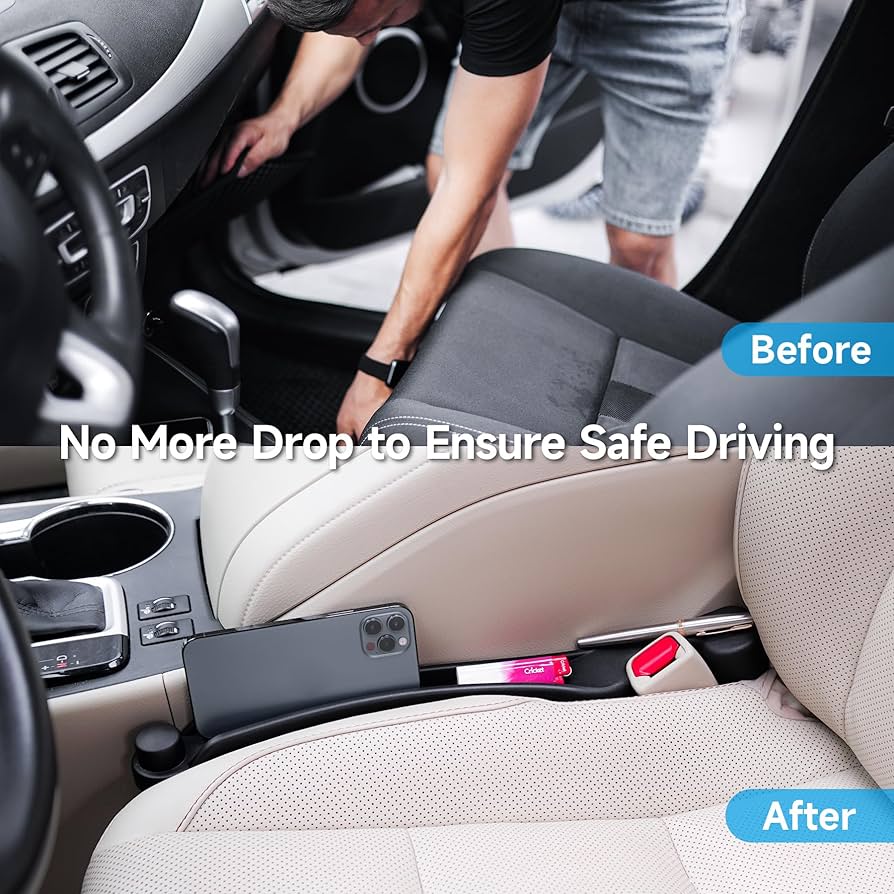
Have you ever noticed the space between your car seats or the gap in an airplane row? This often overlooked area is called a seat gap, and it plays a surprisingly important role in both comfort and functionality. While it might seem like just empty space, the seat gap can actually be quite versatile.
This article will delve into what exactly a seat gap is, explore its various uses and features, and compare how it functions in cars versus airplanes. We’ll also discuss how to maximize the storage potential of your seat gap for a more organized and enjoyable travel experience.
What Is a Seat Gap?
The term “seat gap” refers to the compartment or space situated between two adjacent seats. This area is commonly found in vehicles like cars, trucks, airplanes, and even some public transportation systems. Essentially, it’s the void created by the separation of individual seating units.
While the size and shape of seat gaps can vary depending on the vehicle model and design, they generally serve a similar purpose: to provide additional space for passengers and their belongings. This extra room can be utilized for various functions, ranging from simple storage to housing essential features like cup holders, armrests, and climate controls.
The material used to construct the seat gap also varies depending on the vehicle type. In cars, it’s often made of durable plastic or metal, while in airplanes, it might be a combination of fabric and hard materials. Regardless of the material, the seat gap is designed to withstand wear and tear while providing a functional and aesthetically pleasing element within the vehicle’s interior.
Seat Gap Uses and Features

The versatility of the seat gap makes it a valuable asset for both passengers and vehicle manufacturers. Beyond simply providing storage space, seat gaps can house a variety of features that enhance comfort and convenience during travel.
Storage Compartments
Many vehicles incorporate small storage compartments within the seat gap. These compartments are ideal for holding items like phones, wallets, keys, or even snacks. They keep these essentials organized and easily accessible without cluttering the floor space.
Armrests
Some cars feature integrated armrests within the seat gap, providing additional support and comfort during long drives. These armrests can be adjustable to different heights and angles, allowing passengers to find a comfortable position.
Climate Controls
In some vehicles, the seat gap houses climate control buttons or vents. This placement allows for easy access and adjustment of temperature settings without reaching across the console.
Cup Holders
Cup holders are a common feature in car seat gaps, providing a convenient place to secure drinks while driving. They often come with adjustable sizes to accommodate different cup types.
Seat Gap Storage
Maximizing storage space within your vehicle’s seat gap can be surprisingly effective. By utilizing clever organization techniques and accessories, you can transform this often-overlooked area into a valuable storage solution.
Utilize Dividers
Using small dividers or organizers within the seat gap can help separate items and prevent them from shifting around. This keeps things tidy and makes it easier to find what you need.
Consider Mesh Pockets
Mesh pockets attached to the back of the front seats can be used to store smaller items like phones, sunglasses, or tissues. These pockets are easily accessible and keep items visible.
Invest in Seat Gap Organizers
There are various seat gap organizers available on the market that are specifically designed to maximize storage potential. These organizers often feature multiple compartments, slots for phones and tablets, and even built-in charging ports.
Airplane Seat Gaps vs. Car Seat Gaps

While both airplanes and cars utilize seat gaps, there are some key differences in their design and functionality.
Size and Shape
Airplane seat gaps tend to be smaller and narrower than car seat gaps due to the limited space available within aircraft cabins. They often feature a more rectangular shape to accommodate essential features like cup holders and entertainment screens.
Features
Airplane seat gaps typically prioritize storage for personal belongings, with compartments designed to hold small items like phones, wallets, and headphones. Some airlines also incorporate power outlets or USB ports within the seat gap for charging devices.
Car seat gaps, on the other hand, often include additional features like armrests, climate controls, and even cupholders. The larger size allows for more versatile storage options and a greater range of functionalities.
Conclusion
The seemingly simple seat gap plays a surprisingly important role in both car and airplane travel. It provides valuable storage space, houses essential features, and enhances overall comfort and convenience. By understanding the different uses and features of seat gaps, you can maximize their potential and enjoy a more organized and enjoyable journey.
